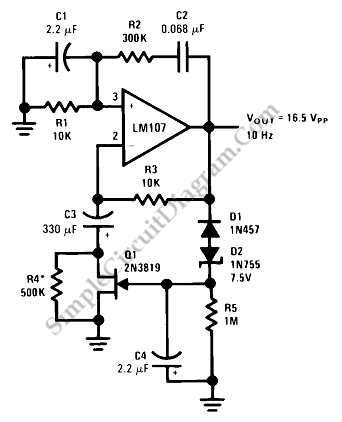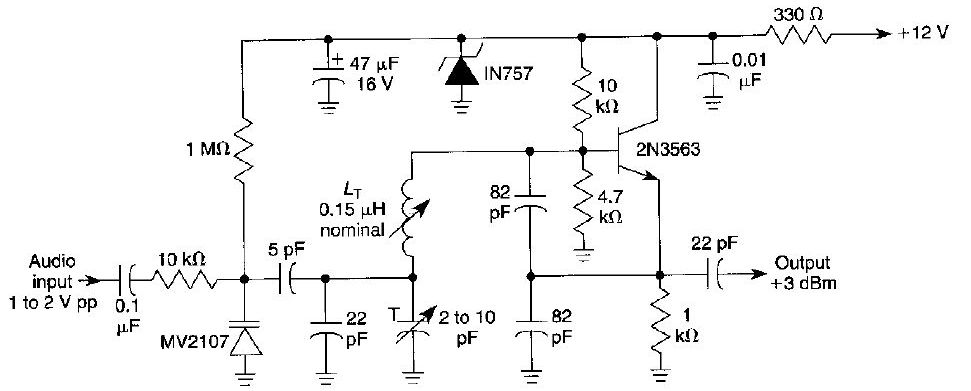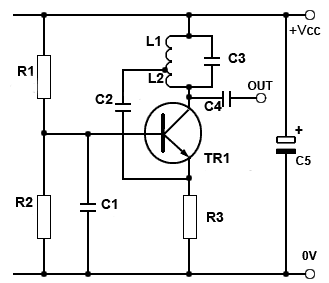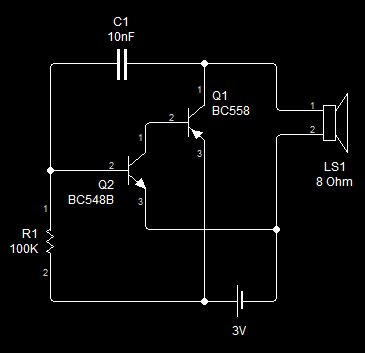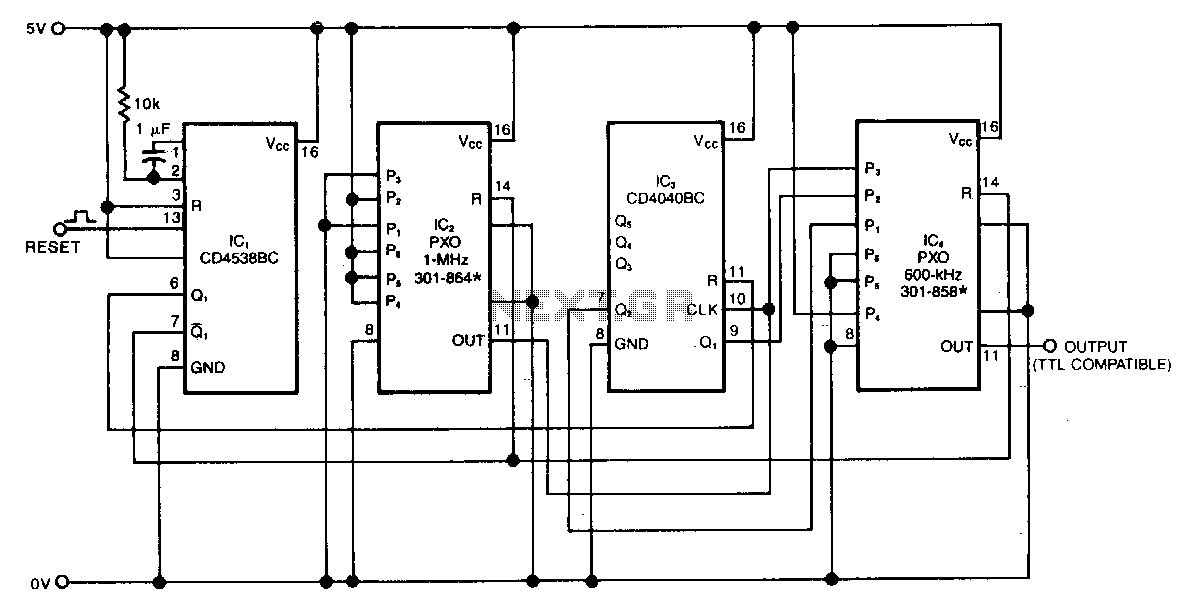
DARLINGTON TRANSISTOR OSCILLATOR
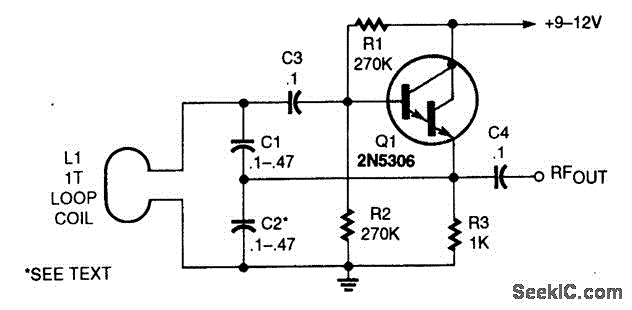
This oscillator utilizes a significant capacitance-to-inductance ratio. L1 is a one-turn coil made from a loop of #12 wire, measuring 12 inches in diameter. This circuit is advantageous for applications such as metal detectors, where a loop antenna is employed.
The oscillator circuit described is characterized by its unique design, which incorporates a one-turn coil (L1) crafted from #12 gauge wire. This wire is formed into a loop with a diameter of 12 inches, creating a substantial inductive element. The large capacitance-to-inductance ratio is a critical feature, as it allows the oscillator to operate effectively at lower frequencies, which is ideal for applications like metal detection.
In metal detectors, the loop antenna serves as both the transmitter and receiver of electromagnetic waves. The oscillator generates a continuous wave signal that is transmitted through the loop. When metal objects are present within the detection field, they alter the electromagnetic field, causing variations in the received signal. These variations are then processed to identify the presence and type of metal.
The circuit may also include additional components such as capacitors, resistors, and diodes, which help to stabilize the oscillator's frequency and improve overall performance. The choice of components and their values will depend on the specific application requirements, including sensitivity and range.
Overall, the oscillator circuit's design is tailored for efficient operation in metal detection applications, leveraging the properties of the large loop antenna and the specific inductance and capacitance values to optimize performance.This oscillator uses a very large capacitance-to-inductance ratio. L1 is a one-tum coil consisting of a loop of #12 wire 12 in diameter. This circuit is useful for metal detectors, etc., where a loop antenna is used.. 🔗 External reference
The oscillator circuit described is characterized by its unique design, which incorporates a one-turn coil (L1) crafted from #12 gauge wire. This wire is formed into a loop with a diameter of 12 inches, creating a substantial inductive element. The large capacitance-to-inductance ratio is a critical feature, as it allows the oscillator to operate effectively at lower frequencies, which is ideal for applications like metal detection.
In metal detectors, the loop antenna serves as both the transmitter and receiver of electromagnetic waves. The oscillator generates a continuous wave signal that is transmitted through the loop. When metal objects are present within the detection field, they alter the electromagnetic field, causing variations in the received signal. These variations are then processed to identify the presence and type of metal.
The circuit may also include additional components such as capacitors, resistors, and diodes, which help to stabilize the oscillator's frequency and improve overall performance. The choice of components and their values will depend on the specific application requirements, including sensitivity and range.
Overall, the oscillator circuit's design is tailored for efficient operation in metal detection applications, leveraging the properties of the large loop antenna and the specific inductance and capacitance values to optimize performance.This oscillator uses a very large capacitance-to-inductance ratio. L1 is a one-tum coil consisting of a loop of #12 wire 12 in diameter. This circuit is useful for metal detectors, etc., where a loop antenna is used.. 🔗 External reference
